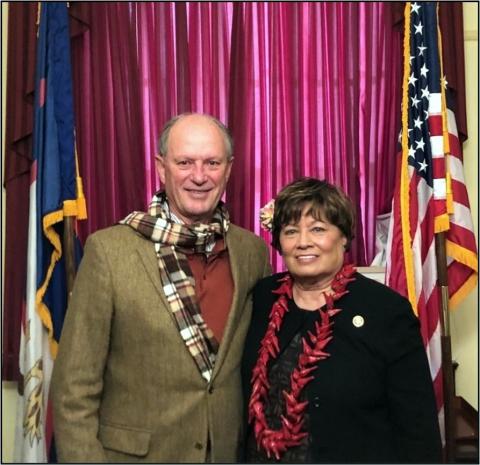Amata Welcomes NOAA Briefing on Vailulu’u Seamount and NOAA Collaboration With ASG
Washington, D.C. – Congresswoman Uifa’atali Amata said she appreciates a recent informative briefing by NOAA Administrator Dr. Richard Spinrad, an oceanographer who also serves as Under Secretary of Commerce for Oceans and Atmosphere, regarding the volcanic status of the Vailulu’u Seamount. Governor Lemanu Mauga made inquiries to federal authorities following the major natural disaster in Tonga, and Amata welcomes NOAA’s assurances of ongoing and future work with Governor Lemanu, the National Marine Sanctuary of American Samoa, and Director Taotasi Archie Soliai of the Department of Marine and Wildlife Resources.

Congresswoman Amata and Oceanographer Dr. Robert Ballard (who discovered the Titanic among others) had a meeting in November 2021, and he plans upcoming research in American Samoa.
Following the eruption in the Kingdom of Tonga, and the resulting tsunami and ash damages and loss of life, Dr. Spinrad provided an optimistic briefing regarding American Samoa’s potential for a volcanic eruption. The NOAA briefing highlighted positive factors that mitigate American Samoa’s potential for major volcanic activity, which NOAA assesses as less likely in comparison to the Tonga eruption.
“The Tonga eruption was a sobering reminder for all of us throughout the Pacific, as our many beautiful islands have histories of volcanic calamity, and we have lifelong memories of the 2009 tsunami,” Amata said. “It is reassuring that the Vailulu’u Seamount has been examined regularly by federal agencies, and that they have helpful information on it. While their report does not currently anticipate a severe eruption on the scale of Tonga’s damages, we do clearly have a seamount that must be closely monitored. Thank you to Dr. Spinrad and Governor Lemanu as NOAA and ASG continue to collaborate on the state of the Seamount.”
Vailulu’u Seamount was surveyed in 2017 and 2019 by the U.S. Geological Survey. Key facts from the NOAA briefing include that the Vailulu’u Seamount is deeper than the Tonga eruption, and termed “dry” — a reference to lesser activity levels. However, NOAA monitoring has identified changes over the years. Dives in 2017 found growth in the central volcanic cone in the seamount since 2005, and imaging revealed a plume in the water related to hydrothermal venting. The next expedition in 2019 once again examined that volcanic cone, about 900 meters below the ocean surface, and noted a vent releasing heated water.
Dr. Robert Ballard participated in the 2019 report on the deep sea in the American Samoa archipelago, which refers to the seamount as “hydrothermally active,” and the 2017 report identified Vailulu’u as “the Samoan hotspot.”
###